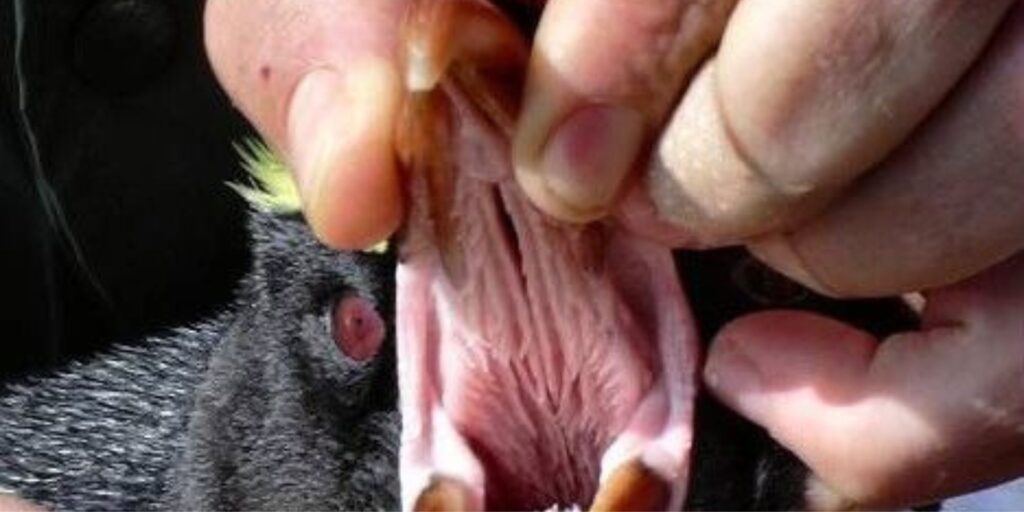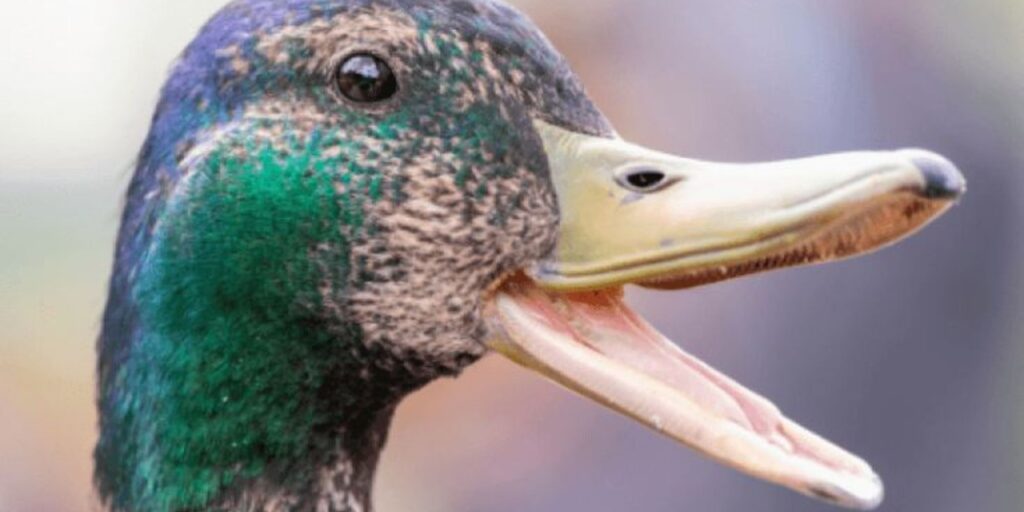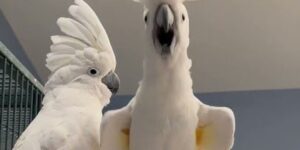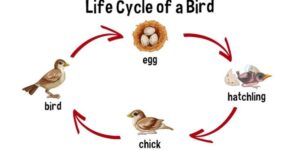Introduction
One of the most common misconceptions about birds is that they have teeth. People often assume that birds possess teeth, similar to many other animals. However, this is not true. Birds do not have teeth, and the reasons behind this lie in their evolution, anatomy, and survival strategies.
Evolution of Birds and Teeth
Bird evolved from theropod dinosaurs, which did have teeth. Some prehistoric bird also had teeth. These ancient species, like Archaeopteryx, displayed a mix of features, including teeth. However, as birds evolved, they gradually lost their teeth. Evolution favoured the development of beaks, which proved to be more effective for survival.
The loss of teeth likely gave birds an advantage. Beaks are lighter and more versatile. They allow birds to perform a variety of tasks, such as pecking, cracking seeds, and catching prey. Over time, teeth became unnecessary and eventually disappeared from birds’ anatomy.
The Structure of a Bird’s Beak
Bird have beaks or bills instead of teeth. The beak is a specialized tool that serves as a multi-functional appendage. Its structure varies depending on the bird species and its diet. For example, seed-eating birds have strong, conical beaks for cracking open seeds. In contrast, birds of prey, like hawks and eagles, have sharp, hooked beaks designed for tearing flesh.
The beak of a bird is made of keratin, the same material that forms human hair and nails. The keratin structure provides strength and durability while keeping the beak lightweight. This adaptation is crucial for birds, as it reduces their overall body weight, aiding in flight.
Why Birds Don’t Have Teeth
The main reason bird do not have teeth is the evolutionary advantage of beaks. Teeth are heavy and require energy to maintain, whereas beaks are lighter and easier to manage. Early birds, like Archaeopteryx, did have teeth, but over millions of years, they evolved to rely more on beaks.
The absence of teeth also contributed to making birds more agile and efficient in flight. Teeth would add unnecessary weight and could interfere with the bird’s balance. Over time, natural selection favoured those with beaks instead of teeth, and this trait became dominant among modern birds.
Advantages of Beaks Over Teeth
Beaks offer several advantages over teeth for birds. One of the primary benefits is that beaks are much lighter. Teeth add significant weight to an animal’s head, which can interfere with flight. Birds, being adapted to flight, need every advantage to keep their weight as low as possible. A beak made of lightweight keratin provides the necessary structure without the burden of teeth.
Beaks are also highly versatile. Birds use their beaks for various tasks, including feeding, grooming, building nests, and defending themselves. Some species have specialized beaks suited to their diets. For instance, hummingbirds have long, slender beaks designed for feeding on nectar, while woodpeckers have strong, chisel-like beaks for drilling into tree bark.
What Birds Eat Without Teeth
Bird don’t need teeth to eat because their digestive system is specially adapted to break down food. Most birds swallow food whole, and their digestive system takes care of the rest. Birds have a part of their stomach called the gizzard, which helps grind down food. The gizzard is a muscular organ that contracts and uses small stones or grit to crush food into smaller pieces, aiding in digestion.
For birds that eat hard foods like seeds or nuts, their beaks are strong enough to crack open the shells. Seed-eating birds, such as sparrows and finches, use their sharp, pointed beaks to break seeds into smaller parts. Birds of prey use their hooked beaks to tear apart meat.
The Role of the Gizzard in Digestion
While bird lack teeth, they have a unique organ called the gizzard to compensate. The gizzard is a muscular pouch that grinds food into smaller, digestible pieces. Many birds ingest small stones or grit, which remain in the gizzard to help break down their food. The gizzard’s grinding action serves a similar purpose to chewing in mammals.
For example, birds that eat seeds or grains will swallow the food whole. The gizzard then grinds the food, aided by the grit or small stones the bird has swallowed. This process allows birds to extract nutrients from their food without needing teeth.
Beaks Adapt to Diet

Birds’ beaks have evolved to match their specific diets. Different species have developed specialized beaks suited to their feeding habits. For example, carnivorous birds like hawks and vultures have sharp, hooked beaks designed for tearing flesh. On the other hand, herbivorous birds like ducks have broad, flat beaks to filter food from water.
Some birds, like parrots, have strong, curved beaks that are well-suited for cracking nuts and seeds. Their beaks are powerful enough to exert significant force, allowing them to break through tough exteriors. Similarly, birds that feed on insects have pointed beaks that allow them to pick insects out of small spaces.
Bird That Once Had Teeth
While modern birds don’t have teeth, some ancient birds do. Fossil records show that prehistoric birds, like Archaeopteryx, had teeth. These early birds were more similar to their dinosaur ancestors, which had teeth. Over time, however, the need for teeth diminished, and birds evolved beaks instead.
Interestingly, the teeth of these ancient birds were not very similar to those of mammals. Instead, they had conical teeth that were better suited to their diet. As birds evolved and adapted to different environments, the loss of teeth became advantageous, as it allowed for lighter bodies and more efficient flight.
The Evolutionary Shift from Teeth to Beaks
The shift from teeth to beaks in birds is a result of millions of years of evolution. Early birds, like Archaeopteryx, had both teeth and wings, representing a transitional stage between dinosaurs and modern birds. Over time, as birds adapted to flight and developed different feeding habits, their jaws evolved into beaks.
The development of beaks allowed birds to exploit a wider range of food sources. Beaks can handle different types of food, from seeds to insects to meat. Bird that could exploit these resources had a better chance of survival, leading to the eventual dominance of beaks over teeth.
Modern Birds and Their Specialized Beaks
Today, birds’ beaks are some of the most specialized parts of their anatomy. Each bird species has a beak adapted to its specific diet and lifestyle. For example, the beak of a pelican is long and pouch-like, designed to scoop up fish, while the beak of a toucan is large and curved, allowing it to reach fruit on tall trees.
Other bird, like hummingbirds, have long, slender beaks that can reach deep into flowers to drink nectar. Ducks have wide, flat beaks that they use to filter small organisms from water. The diversity of bird beaks reflects the wide range of diets and feeding strategies among different species.
Are There Any Birds With Teeth?
There are no living bird species with teeth. However, scientists have discovered evidence that some ancient birds had teeth. Fossils of these birds reveal teeth similar to those of reptiles and dinosaurs. These ancient birds, which lived millions of years ago, did not have the specialized beaks that modern birds have today.
Despite the absence of teeth in modern birds, the evolutionary link between birds and their dinosaur ancestors remains clear. Birds share many characteristics with theropod dinosaurs, including a similar skeletal structure. However, the loss of teeth in birds is one of the key differences that sets them apart from their ancient relatives.
Conclusion: Why Bird Don’t Have Teeth

Bird do not have teeth because their evolutionary ancestors gradually replaced them with beaks. This adaptation provided several advantages, such as reducing body weight and offering a versatile tool for feeding and other tasks. Beaks allow birds to consume a wide variety of foods without the need for teeth. Additionally, the gizzard plays a crucial role in digesting food, compensating for the absence of teeth.
The transition from teeth to beaks in birds is a prime example of evolutionary adaptation. Bird evolved to meet the demands of flight and feeding, and their beaks became essential tools for survival. While no living birds have teeth, fossil evidence shows that their dinosaur ancestors did, highlighting the fascinating evolutionary journey from teeth to beaks.


